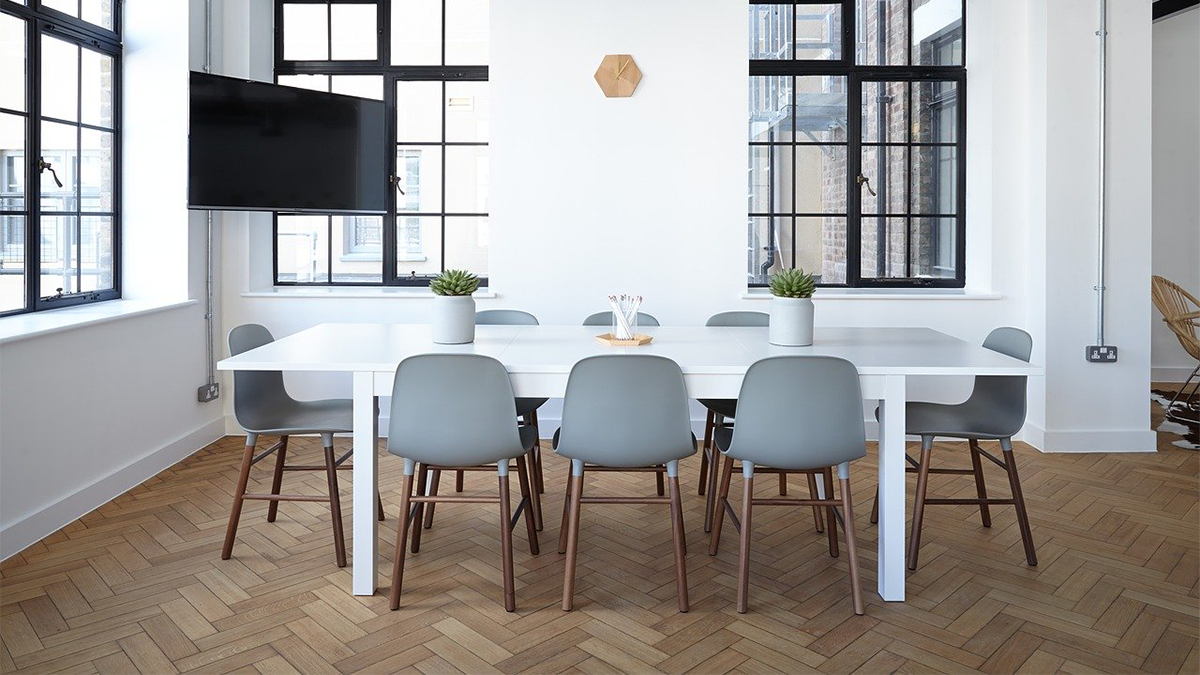Whilst most organisations have taken steps to improve hygiene and enforce social distancing on their premises since the outbreak of the Covid-19, should employers be thinking more long-term about improving hygiene and wellbeing in the workplace?
With many people and organisations seeing the benefits of working from home, offices will need to provide a happier and more hygienic space to attract staff and create a productive working environment.
Anyone who has worked in an office before will know that they can be hotbeds of illnesses often caused by the office design itself, which even led to the term ‘Sick building’ syndrome’ being coined long before the Covid-19 outbreak.
The benefits for employers are clear – reduce staff sick days and increase productivity by creating a safer, more hygienic space for employees. Here are some ideas for creating workspaces to sustain the future of office working during and after the Covid-10 pandemic.
Changing Materials
One thing is for certain – everyone has become much more informed about how infectious diseases spread, which will probably translate into hygiene being more of a focus for office designs of the future.
This could even change the building materials used, with offices choosing more hygienic building materials that can be easily cleaned and withstand regular use of heavy cleaning products, such as laminate surfaces being prioritised over wood.
This also extends to the ventilation in the office, with better air circulation improving the air quality and helping to reduce the spread of airborne illnesses between employees.
Hygiene at the Forefront
Many business owners are currently feeling the cost of lost sick days at the moment due to employees catching the virus or isolating, but this is not a new phenomenon. In fact, it’s estimated that U.S. Workforce Illness Costs $576B Annually due to sick days, compensation and other health-related costs.
With many office introducing mandatory handwashing on entering a workspace as part of social distancing measures, could this become a new trend to reduce the spread of other contagious illnesses such as the common cold and seasonal flu?
Whether it’s a sanitizing station or sink at the entrance to your workspace, increased hygiene helps to reduce the spread of illnesses which can affect the whole workforce and the employer due to staff absences.
A ‘Contactless Office’
Another idea which could become commonplace is the ‘contactless office’, which basically means eliminating the need for touching communal surfaces such as door handles, buttons, coffee machines etc.
These communal buttons would be operated by smartphones, motion sensors or voice activation helping to reduce transmission of illnesses in the workplace.
Of course, these measures won’t be available for all organisations as they will come at a higher cost than standard equipment, but could soon pay for themselves with a happier and healthier workforce.
Better Self-Regulation
The biggest change relating to office working that could come from the Covid-19 pandemic is the whole perception of coming to work when ill and company sick pay policy.
Due to the rise in less secure working practices many employees have little or no mandatory sick pay in their contract. Many companies also provided strict targets to hit targets and deadlines which means that workers ignore their health concerns.
These sorts of workplace practices lead to employees coming into work when ill and potentially affecting a much larger portion of the workforce.
It may be that post-Covid employers are more flexible with home-working, allowing for a certain number of ‘home working’ days which could be used for employees to boost their mental and physical health if needed and stay home when they feel an illness coming on but don’t necessarily want to use a sick day.
After the Covid pandemic, employers may become more aware of the risks of workplace illnesses and try to support employees more with sick pay and offering home working in certain situations.
In Summary
There’s no denying Covid-19 pandemic has been a difficult period for people’s mental and physical health, and it’s true that many aspects of the working environment have changed forever.
One such change potential positive change to come from this is the focus on employees’ health and wellbeing, which clearly needs to be prioritized more by employers to create a happier and healthier workplace.


